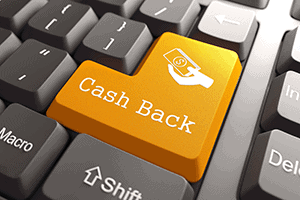“Can I get a refund?” – A question that no retailer wants to hear, the automatic guarantee of a refund by a merchant has become ingrained into 21st century America. From expensive jewelry to small ticket items, purchased in person or over the web, the ability to return goods to merchants in exchange for a customers money back goes almost unquestioned. But many merchants do not wish to offer refunds over frustrations of the costs involved. When a customer cannot obtain a refund directly from a merchant, they begin the process called a chargeback. In a perfect business world there would be no refunds, no chargebacks. But we are inhabitants of an imperfect world working in an imperfect marketplace, and chargebacks happen all the time. Why they happen, how they happen and what to do about it is going to be covered in this three part series.
Chargebacks and refunds defined
What is a chargeback, and how does it differ from a refund? To answer this question, let’s first define what is a refund and then what is a chargeback. A refund is a remittance of funds from a merchant to customer most commonly defined as the returning of cash from a merchant in exchange for the return of goods by the consumer. A refund can be for any purpose, from non-shipment of goods to a defect in the product. But regardless of why a refund is initiated, it is always between the business and its customer.
A chargeback by nature is a far less desirable route for a merchant in an already frustrating ordeal. A chargeback is defined as when a consumer contacts its credit card company or bank to complain about a merchant and ask the credit card company or bank to issue them a refund directly. If a refund is issued by the credit card company or bank to the consumer, the funds are forcibly taken from the merchant. To add insult to injury, the merchant is then hit with a chargeback fee on top of the lost goods by the merchant.

What customers don’t know is after their 3rd chargeback they get counterfeit cash
What is the chargeback process?
Before we continue with more definitions of what is and is not a chargeback, laying out exactly what the chargeback automation procedure steps are is an important development. On average, a chargeback has about 6 to 8 different steps on its path from customer initiation to bank/merchant resolution. Below is a well written chargeback path from the website Dalpay.com that helps illustrate how the typical chargeback develops.
Step 1: The cardholder files a complaint by contacting his or her issuing bank about the erroneous transaction.
Step 2: The issuing bank checks whether the dispute is valid. If the bank finds the request invalid, the dispute is simply declined and the customer is charged with a processing fee.
Step 3: If the issuing bank sees a potential error, a provisional credit is provided to the cardholder. The bank then initiates the usual chargeback process, to obtain credit from the merchant’s sponsoring bank.
Step 4: The merchant bank sponsoring the account then checks whether the chargeback is valid or not. They usually send you a notification to inform you of a pending chargeback request.
Step 5: The merchant’s sponsoring bank then does some research on the validity of the chargeback claim. If the chargeback is found to be invalid, they will decline said chargeback and inform the card-issuing bank.
Step 6: Assuming the chargeback is invalid, the amount of the chargeback is removed from the merchant’s account and the merchant’s bank will notify the merchant about the outcome.
Step 7: If a processing error has indeed occurred, the corresponding correction is then sent to the card-issuing bank for re-presentation.
Step 8: The merchant will be asked to provide the needed documentation and proof to remedy the chargeback. If the documentation provided is satisfactory, the claim for chargeback is denied and the customer will be charged once again for the sale. If the documents seem to be unsatisfactory, the chargeback amount will be provided to the customer.
So I understand what a chargeback is, how do I avoid it?
Preventing chargebacks, the legality of chargebacks, and even the simple question of “does a merchant have to honor a chargeback”, are all questions that merchants ask themselves from time to time. Chargebacks happen across all payment processors including PayPal, Stripe and Google Checkout. Check back in and continue reading as Signifyd will shortly post part 2 and 3 on, ‘The Basics on handling chargebacks’. If you have any specific questions about chargebacks or about Signifyd in general reach out to us at [email protected] or at [email protected]. Thanks for reading!







